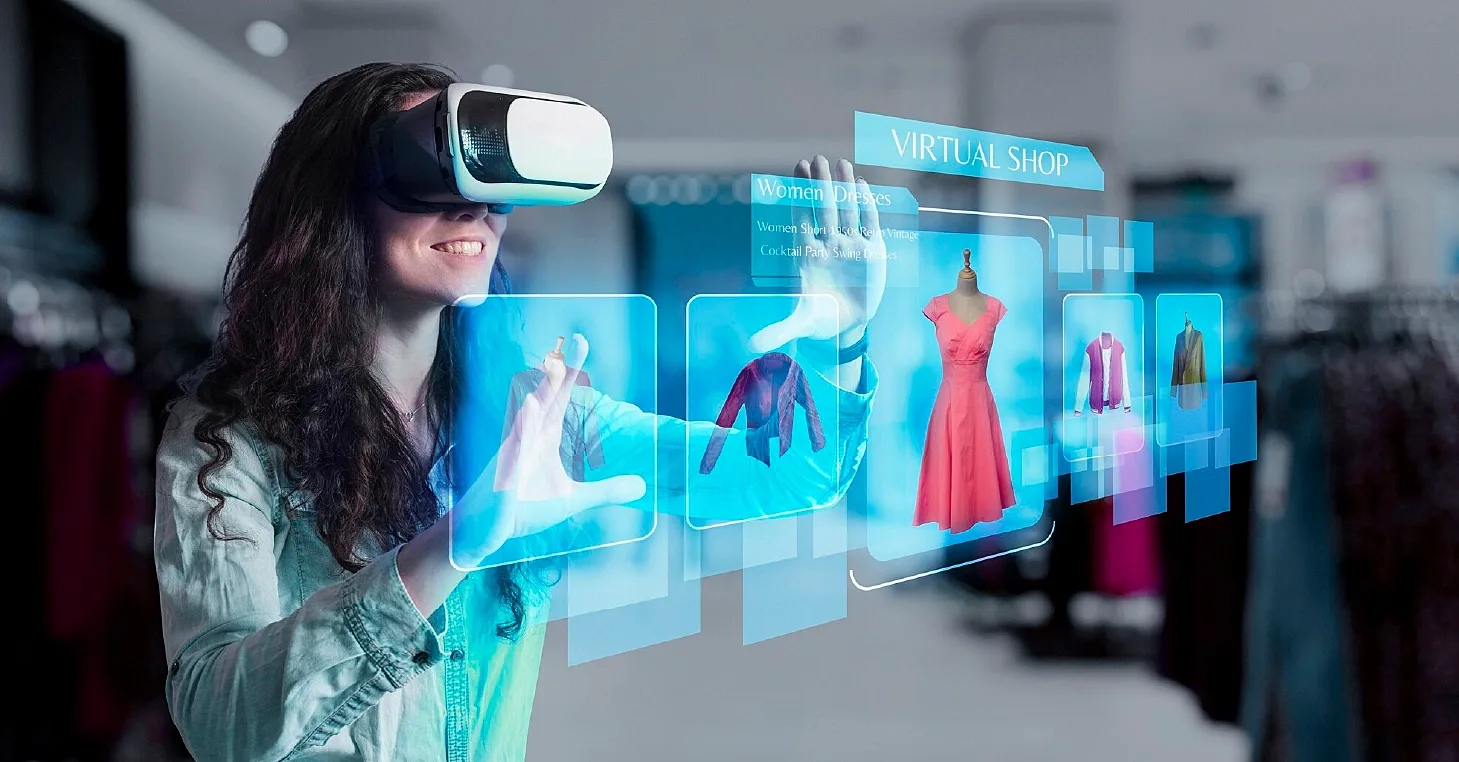Augmented Reality (AR) has revolutionized the way consumers interact with products, particularly in the fashion, beauty, and eyewear industries. By allowing customers to virtually try on products from the comfort of their homes, businesses can enhance the shopping experience, increase engagement, and drive sales. This blog will guide you through the benefits of virtual try-on features and how to implement them effectively using augmented reality.

Table of Contents
Toggle1. Understanding Augmented Reality (AR)
Before diving into implementation, it’s essential to understand what augmented reality is. AR overlays digital information—such as images, sounds, and other data—onto the real world, typically viewed through a smartphone camera or AR glasses. This technology can create immersive experiences that blend the digital and physical worlds.
2. Benefits of Virtual Try-On Features
Integrating virtual try-on features using AR offers numerous advantages:
A. Enhanced Customer Experience
Virtual try-ons create an interactive and engaging shopping experience. Customers can visualize how products will look on them, reducing the uncertainty that often accompanies online shopping.
B. Increased Conversion Rates
By providing customers with the opportunity to see how products fit and look, businesses can significantly reduce return rates and increase conversions. When customers feel more confident in their purchases, they are more likely to complete transactions.
C. Improved Customer Engagement
AR technology can enhance user engagement through gamification elements, social sharing capabilities, and personalized experiences. This can lead to increased brand loyalty and customer retention.
D. Competitive Advantage
Incorporating AR into your online shopping experience can set your brand apart from competitors, especially in saturated markets. Offering a unique and innovative shopping experience can attract new customers and retain existing ones.
3. Steps to Implement Virtual Try-On Features
A. Identify the Right Products
Start by determining which products are suitable for virtual try-ons. Consider items that customers typically want to see on themselves before purchasing, such as:
- Apparel: Clothing items like dresses, shirts, and pants.
- Accessories: Jewelry, handbags, and watches.
- Beauty Products: Makeup shades, hair colors, and skincare items.
- Eyewear: Glasses and sunglasses.
B. Choose the Right AR Technology
There are several AR technologies available for creating virtual try-on experiences. Some popular options include:
- AR SDKs and Frameworks: Utilize software development kits (SDKs) like ARKit (iOS) and ARCore (Android) to build custom AR experiences.
- Third-Party Platforms: Consider using platforms such as Perfect Corp, ModiFace, or YouCam, which offer ready-to-use AR solutions for virtual try-ons.
- Web-Based AR: Implement web-based AR solutions that allow users to access virtual try-ons through their mobile browsers without needing an app.
C. Develop High-Quality 3D Models
To create realistic virtual try-on experiences, invest in high-quality 3D models of your products. This can be achieved through:
- 3D Scanning: Use 3D scanning technology to create accurate representations of your products.
- 3D Rendering: Work with professional designers to create detailed 3D renderings of your products.
D. Create an Intuitive User Interface
Design an intuitive user interface (UI) that makes it easy for customers to access and use the virtual try-on feature. Consider the following elements:
- Clear Instructions: Provide step-by-step instructions for using the virtual try-on feature.
- User-Friendly Controls: Incorporate simple controls for users to rotate, zoom, or adjust the products as needed.
- Social Sharing Options: Allow users to share their virtual try-on experiences on social media platforms to enhance engagement and brand exposure.
E. Test and Optimize the Experience
Before launching the virtual try-on feature, conduct thorough testing to ensure a seamless user experience. Gather feedback from beta testers and make necessary adjustments to improve performance and usability.
F. Promote Your Virtual Try-On Feature
Once your virtual try-on feature is live, promote it across your marketing channels:
- Website and App: Highlight the new feature prominently on your website and app.
- Social Media: Create engaging posts and videos demonstrating the virtual try-on feature to attract attention and encourage usage.
- Email Marketing: Inform your existing customers about the new feature through email campaigns.
4. Case Studies: Successful Implementations of AR Virtual Try-Ons
A. Warby Parker
Warby Parker, an eyewear retailer, has successfully implemented an AR feature that allows customers to virtually try on glasses using their smartphones. By integrating this technology into their app, they have significantly enhanced the shopping experience, resulting in increased customer engagement and higher conversion rates.
B. Sephora
Sephora has utilized AR technology through its “Virtual Artist” feature, which allows customers to try on makeup products virtually. This feature has improved customer confidence in purchasing beauty products and has helped Sephora establish itself as a leader in the beauty industry.
5. Challenges to Consider
While implementing virtual try-on features using AR can be highly beneficial, there are some challenges to consider:
- Technical Limitations: Not all devices support AR technology, which may limit access for some users.
- Cost: Developing high-quality AR experiences can be costly and time-consuming.
- User Adoption: Some customers may be hesitant to use new technology. Providing clear instructions and promoting the feature effectively can help overcome this barrier.
Conclusion
Augmented reality has the potential to transform the online shopping experience by allowing customers to virtually try on products. By implementing virtual try-on features, businesses can enhance customer engagement, increase conversion rates, and gain a competitive edge in their industry. By following the steps outlined in this blog, you can successfully integrate AR technology into your e-commerce strategy and create a seamless and immersive shopping experience for your customers. As AR technology continues to evolve, the opportunities for innovation and growth in the retail sector will only expand. Embrace this technology, and watch your brand thrive!


No responses yet